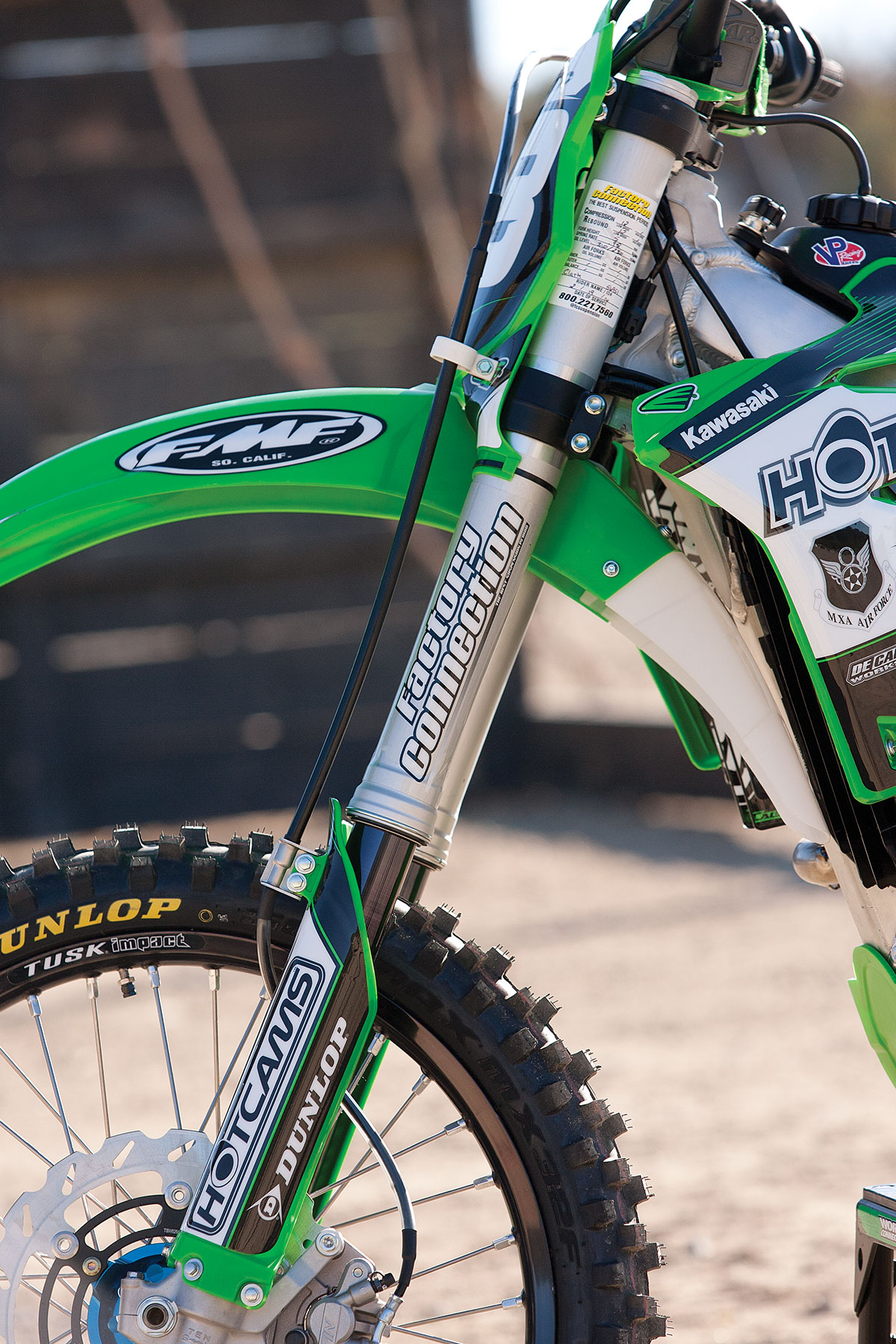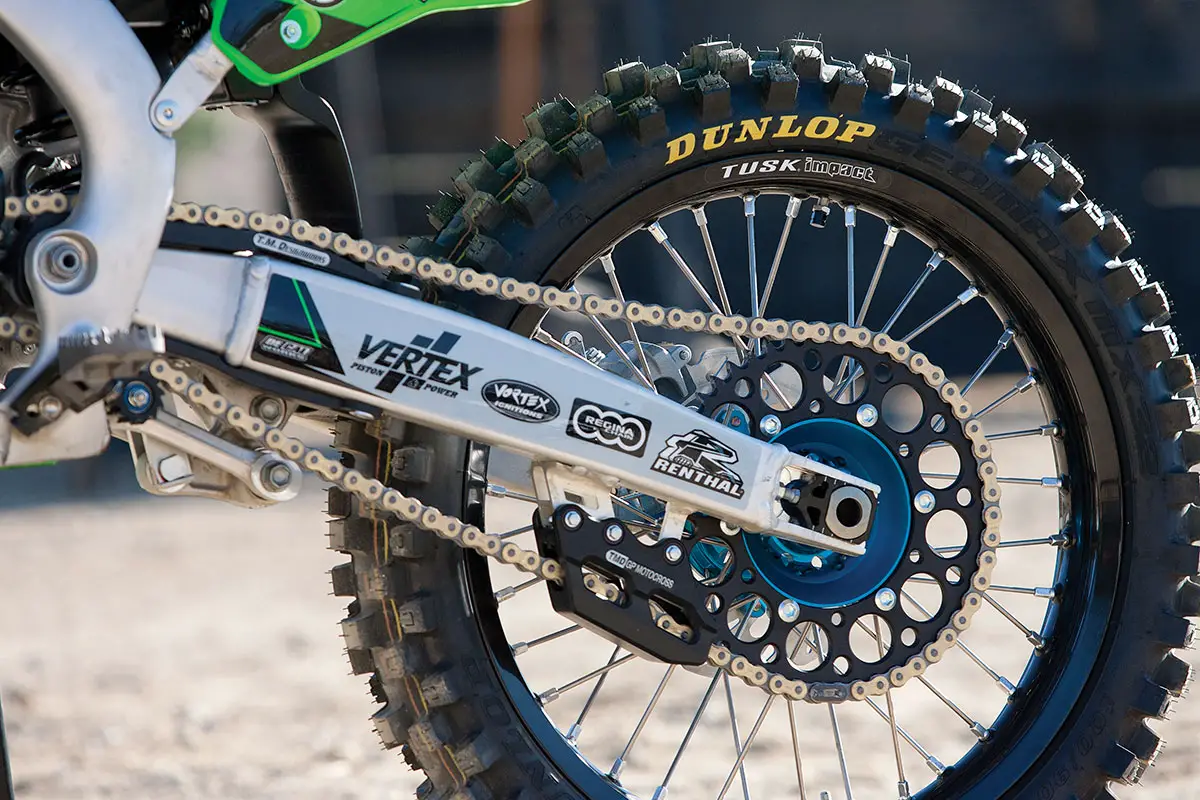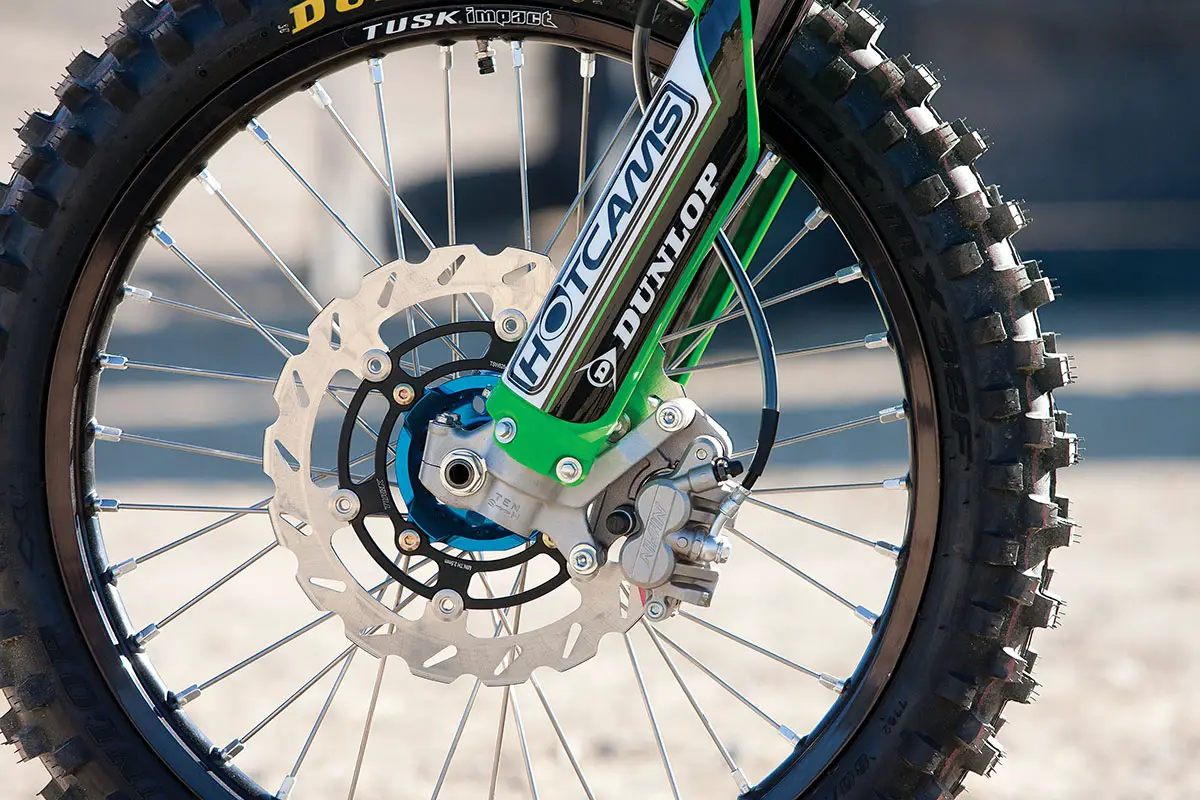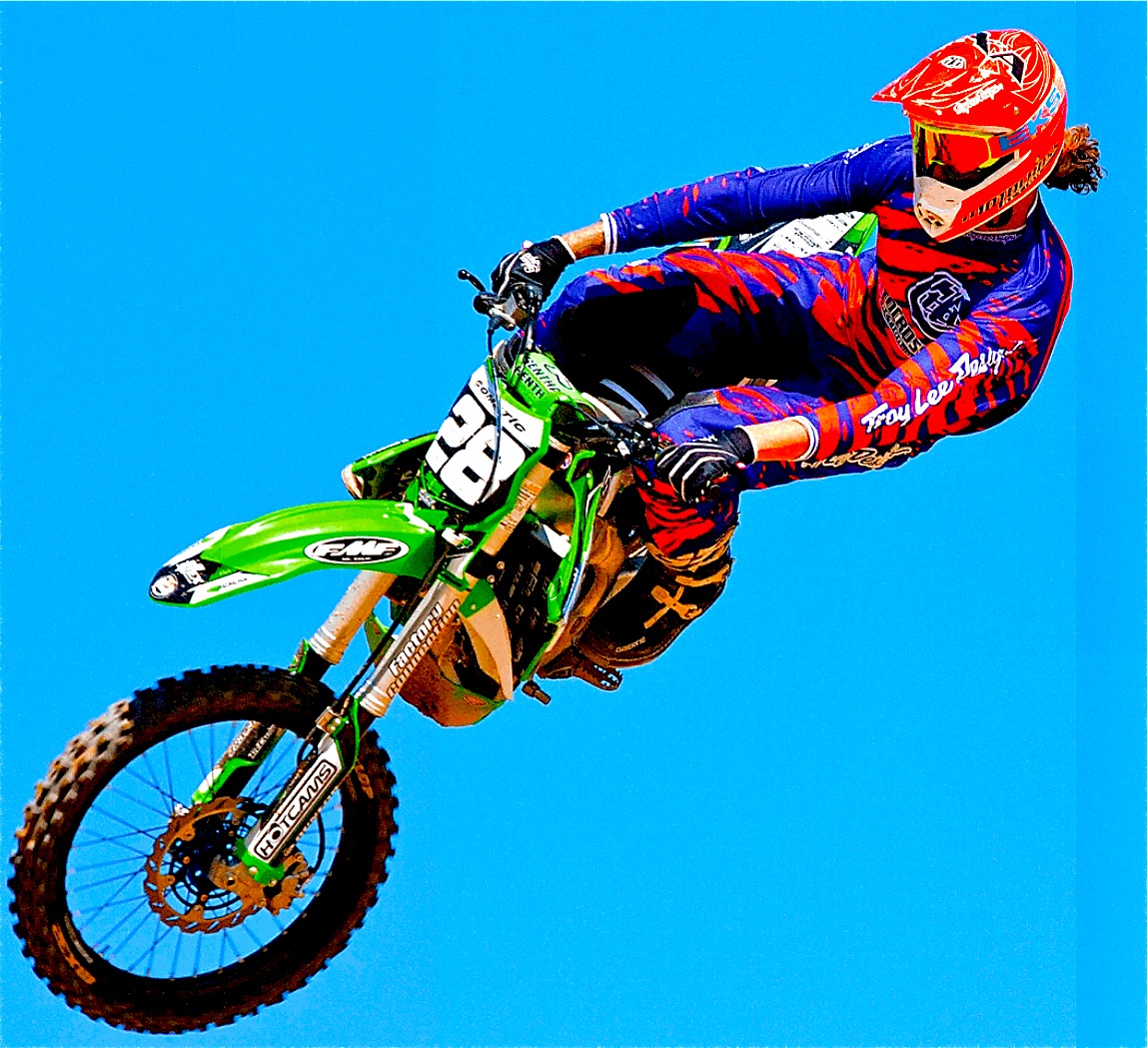WE BUILD A BETTER & FASTER 2016 KAWASAKI KX250F

Over the last five years the Kawasaki KX250F has won three out of five MXA 250 shootouts. Back in 2013 the KX250F was new from the ground up, blowing its competition out of the water. It wasn’t the best-handling bike, nor the best suspended—heck, we could fry a clutch in a few race weekends. But, what the KX250F did much better than its competition was produce the best powerband. It was unblemished, raw power to the ground.

In 2014 Yamaha released its fuel-injected YZ250F. It stood toe to toe with the KX250F—although, in its first production year, the YZ250F went through its teething stages. The 2014 Kawasaki KX250F eked out a slim shootout victory over the new Yamaha based on power versus suspension. The following year Yamaha ironed out its problem areas with the YZ250F to dethrone the KX250F. For 2016 the Kawasaki R&D department left the KX250F unchanged. It was the same bike that we had loved three years ago, but now we just liked it. It was no longer the most powerful 250 four-stroke on the track (KTM and Husky jumped over the green machine by almost 4 horsepower). That left the KX250F on the back burner. With the Japanese manufacturer’s four-year update cycle, every KX250F loyalist is hoping to see an all-new KX250F in 2017, but that doesn’t help riders who invested their hard-eared cash in a 2014–2016 KX250F. All is not lost, though; the Kawasaki KX250F can still be a contender. The MXA wrecking crew wanted to help guys with green fever make their KX250Fs as good as the competition.
 The Vortex X-10 ignition allowed the bike to rev to the moon and back. To shift or not to shift? That is the question. Either way, it never fell off the pipe.
The Vortex X-10 ignition allowed the bike to rev to the moon and back. To shift or not to shift? That is the question. Either way, it never fell off the pipe.
WORKING ON THE ENGINE
At 39.88 horsepower at peak, the 2016 Kawasaki KX250F is 4 horsepower short of the Austrian powermongers, but the good news is that the KX250F and the YZ250F are on par with each other on the dyno. Our goal was to find some extra ponies to go along with the KX’s already excellent power placement. To close the horsepower gap, we selected a Hot Cams Stage 1 camshaft, FMF 4.1 exhaust and Vortex X-10 ECU. We didn’t want to alter the powerband too much, just raise its numbers across the board.

On the track our Hot Cams cam, FMF pipe and Vortex mapping changes allowed the engine to pull longer and harder from gear to gear. Every MXA test rider felt that he was able to rev the KX250F out further, which made the next shift much easier to grab. We were especially impressed with how well the bike ran in off-throttle situations when the engine was able to jump up into the powerband without the need to abuse the fragile KX250F clutch. Midrange power increases encouraged test riders to stay a gear higher in certain sections of the track. The extra horses made the bike feel calmer, so test riders didn’t have to hammer out of every turn or over every jump.
WORKING ON THE SUSPENSION

As for the suspension, it’s like a journey back to the old days. The KX250F uses Showa SFF forks. Read that again. We didn’t say Showa SFF-TAC forks. Nope, these are the old-school, coil-spring Single Function Forks (SFF) from before air forks. We have never been happy with the single-spring Showa SFF forks. We could live with them, but getting the settings in the ballpark always required us to max out one side of the spectrum, with fast riders going in and slow riders going out—to the extreme. Bottom line: we had Factory Connection massage the forks and shock on our Kawasaki KX250F. Factory Connection increased the damping pressure on the front and rear. On the track the forks had a stiff feel but compressed freely over chop, making for a plush ride. In the end the KX250F felt balanced, and both ends had confidence-inspiring bottoming resistance.

WORKING ON THE HANDLING
The new suspension valving improved the handling, but the KX250F frame still exhibited the understeer that it is famous for. The chassis of the KX250F has an old-school feel. It is a rear-weighted bike that you guide with the rear wheel while turning the handlebars excessively at low speeds. The KX250F doesn’t want to turn as fluidly as the KTM or Husky, or as aggressively as the Suzuki or Honda. The best fix is to change the triple-clamp offset, but most riders have budget constraints that are seriously strained by the price of cam, pipe, ignition, fork and shock mods. We elected to band-aid the KX250F’s handling ailments by raising the fork tubes 10mm in the clamps and reconfiguring the shock’s race sag to put more weight on the front end. The trick is to find a head angle, via fork tube height, that makes the KX geometry agile while avoiding the inevitable head-shake that comes with going too far.

WORKING ON THE VULNERABILITIES
The 2016 Kawasaki KX250F, and by proxy the 2013–2015 models also, is vulnerable in a few areas. The clutch is questionable for all-out racing. If you are a clutch abuser, the first thing you need to do is put stiffer clutch springs in; however, if you are upping the horsepower by two or more ponies, you need to consider investing in a full Hinson clutch like we did. The Hinson clutch is a bulletproof unit that will last years longer than the weak stock unit. The search for an inexpensive set of practice wheels almost always leads to Tusk Impact wheelsets. At under $600 for a set, they are a good choice. While you’re at it, add a TM Designworks chain guide to the parts list. The KX250F’s frail rear chain guide and buffer pad will wear out in short order.
It is possible to build a 2016 Kawasaki KX250F that is almost perfect—the Pro Circuit team does it, but that wasn’t in our budget (or anyone’s budget unless he is named Bill Gates). We wanted to fix the problem areas that not only could be easily addressed, but would make the most difference for the least money. Please note that the whole concept of “least money” when talking about hopping up 250cc four-strokes is flawed from the get-go. In short, we spent our money on improving power across the board, refining the suspension for our racetracks and replacing weak-link components with more reliable ones. Now we can start saving up for the next-generation Kawasaki KX250F.








Comments are closed.